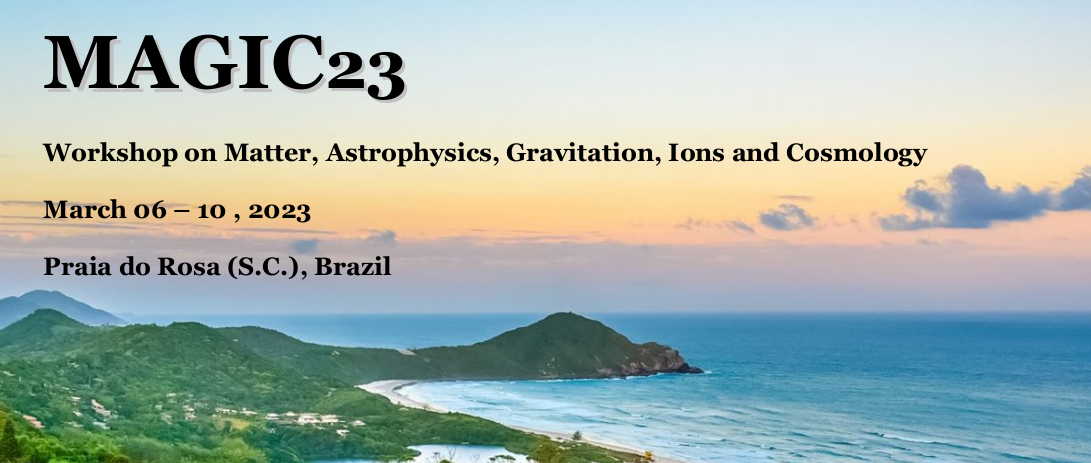Speaker
Description
The present research aimed to describe macroscopic properties of neutron stars assuming zero temperature and different nuclear models, such as the (linear) QHD – I and the non-linear Walecka model. The first one considers that the interaction inside the nucleus has two contributions: an attractive one at large distances, and a repulsive one at short distances. Adding to that, the second model also brings to consideration the interaction between the existing scalar fields and the inclusion of a vector-isovector interaction. The equations of state (EoS) for nuclear matter are investigated and then stellar matter is obtained and then used as input to the Tolman, Oppenheimer and Volkoff (TOV) equations, making it possible to get information such as maximum masses and radius of the compact object under study. For a better analysis, graphs were made with such data (pressure vs baryonic density and solar masses vs radius) and the results for each type of matter, with its respective model and parameters, were compared.

